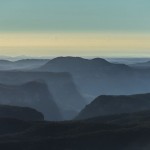Things to See at Flinders Chase National Park
Think of Kangaroo Island as a time capsule of Australian natural history. Its separation from the mainland has allowed endemic species to thrive where they have otherwise been eradicated by invasive species in present day Australia. And if Kangaroo Island is a time capsule, Flinders Chase National Park may be its most important artifact.
Flinders Chase National Park is a look back in time at the Australian outback. See huge swaths of pristine, untouched wilderness perfect for an afternoon hike. Geological wonders ripe for photo opportunities dot the landscape. Nineteenth century architecture provides a look back to the country’s early history.
Take a walk into the past with our guide of things to see at Flinders Chase National Park.
Admirals Arch
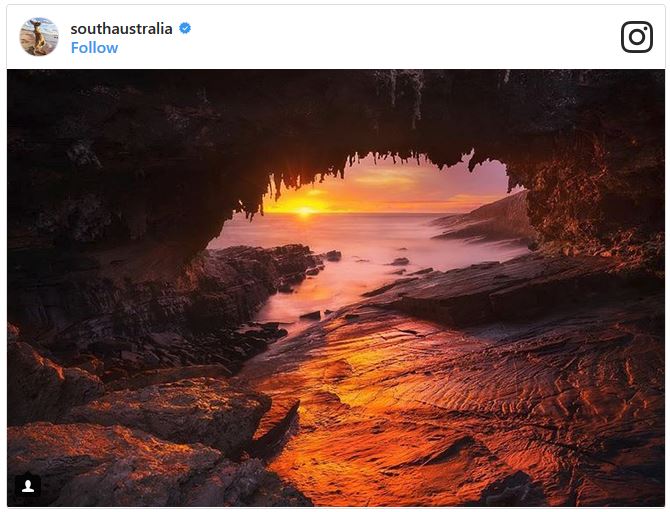
This stunning, natural archway almost looks meticulously sculpted. The multi-layered, rock bridge features gnarled stone and hanging stalactites. Thousands of years of erosion from the water below formed the hollow we see today. Take a walk down to the viewing platform. From there you’ll have the best view of Admiral’s Arch through to the sea beyond. Tip: Sunsets at Admiral’s Arch are breathtaking. From the right point on the viewing platform, you’ll see the sun set over the water centered in the arch. Also be sure to lookout for a colony of New Zealand fur seals that have made their home on the slab of stones directly below the Arch. Those seals scored some of the best real estate in the country!
Remarkable Rocks
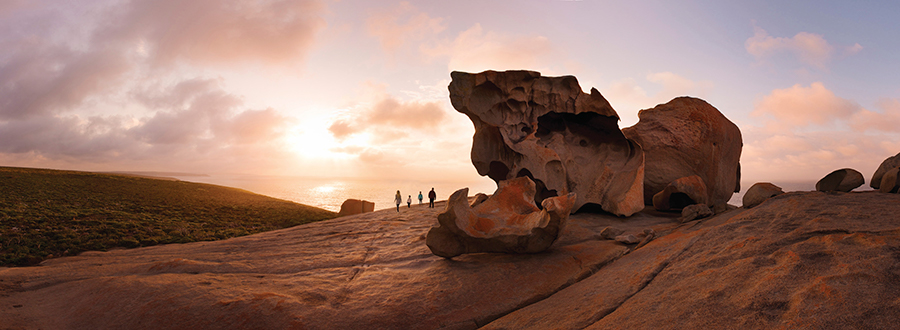
This signature landmark is almost a rite of passage on your trip to Kangaroo Island. Remarkable Rocks is one of the best photo-ops on the island. The aptly named granite stones look almost unnatural when you look at them. Like they could have been sculpted by humans. But their round-waviness is evidence of the more than 500 million years it took for them to form. Rain and waves from the ocean wore down huge granite boulders to the interesting, pitted rock formations they are today. Orange lichen covers many of the formations found at Remarkable Rocks. Combined with the pink, black and blue granite mix, the rocks take on a multi-colored rainbow hue, especially during sunrises and sunsets. Photographers take note: the “golden hour” here is truly remarkable. No wonder this is one of the most photographed spots on Kangaroo Island.
Cape du Couedic Lighthouse
This Kangaroo Island hike is a beautiful look in to the past. Begin at the Cape de Couedic lighthouse. This 19th century lighthouse is isolated on the tip of Kangaroo Island. In fact, in the lighthouse’s early days the keepers would remain in the keepers’ cottage with their families, only being delivered supplies every 3 months. No wonder lighthouse keepers are said to be reclusive!
Today, the lighthouse is fully automated, eliminating the need for a full-time keeper. The cottages surrounding the lighthouse have been turned in to destination accommodations for those looking to get away from it all.
Weirs Cove Hike
While you’re at the lighthouse, embark on the 2-mile hike down to Weirs Cove. When the lighthouse keepers would receive their once-every-3-month resupply, they would make the same trek down to the cove.
Because of the rough terrain, getting supplies from the cove to the lighthouse required a zipline-winch system pulled by horses. Even after the motor vehicle was invented – horsepower prevailed.
On your hike, you’ll see the remains of this zipline supply system along with sheer cliff faces and stonework more than 100 years old.
Not to mention, the view over the sea from the cove is spectacular!
Platypus Waterholes Walk
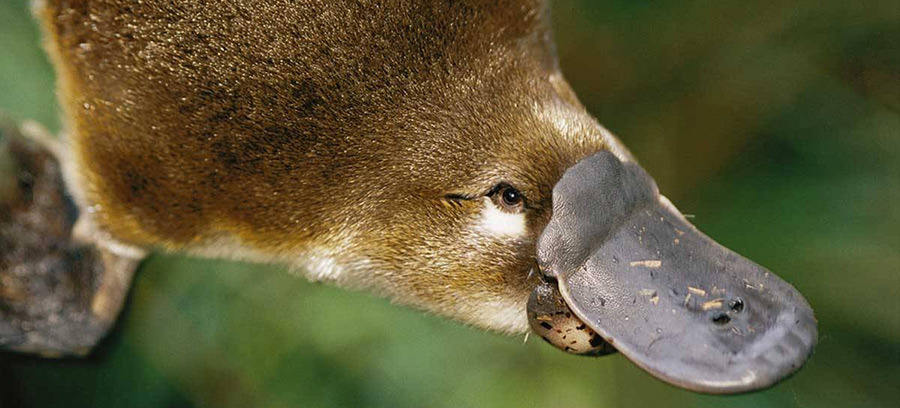
“You had me at platypus”.
One of the most sought-after wildlife sightings in Australia is this duck/beaver hybrid creature. The duck-billed platypus is such an odd creature, that the first scientists to examine one thought they were the victims of a prank!
It’s an animal that doesn’t really know if it’s a water creature or a land mammal, or maybe a bird? In any case, the platypus is as cute as it is perplexing.
Enter this walk straight from the Flinders Chase visitors center. The 2.5 mile stroll winds past Aussie bush and watering holes where the platypus’ have been known to make their home.
They can be elusive creatures, so there’s no guarantee you’ll see a platypus immediately. But keep your eyes peeled for this rare animal found only in Australia. Try and time your walk around dawn and dusk to have the best chance at a spotting.
West Bay Beach and Campsite
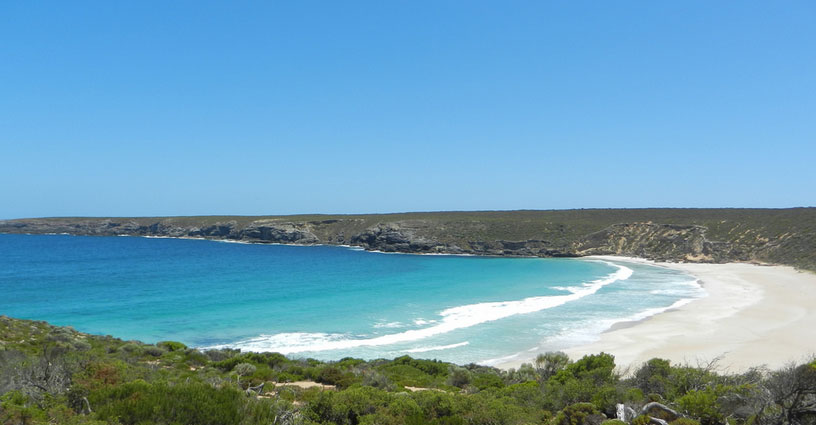
The perfect way to cool down after a long walk seeing the Flinders Chase sights. This pristine beach is “postcard-ready” with it’s white sand and sapphire-turquoise waters. Though this secluded beach is a favorite among Flinders Chase visitors, it is rare that you’ll find a crowd on this coast. Instead, enjoy the quiet atmosphere and surrounding cove. Swimming and fishing are permitted at West Bay so come to the park prepared for a day at the beach after seeing the sights.
For those looking to rough it a bit on their vacation, nearby West Bay campground is a great spot to stay overnight just steps from the shore. Camping out lets you see the sunrise and set over the coast for an unforgettable experience.
Just remember to pack in all you’ll need for the day and night. The West Bay campground provides a place to pitch a tent and little else. The only creature-comfort you’ll find, luckily, is a toilet – but don’t forget your water and portable stove!
Snake Lagoon Walk
This scenic walk starts at Snake Lagoon and winds through Sugar Gums and mallee before descending into the Rocky River Valley. The trail crosses Rock River and meanders along its band to the Southern Ocean Coast. You can find the trail head about five and a half miles from Flinders Chase Visitor Center off West Bay Road.
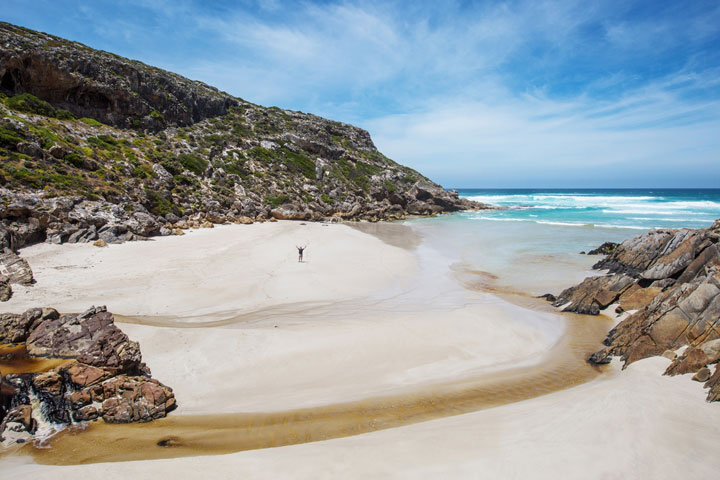
Kangaroo Spotting
Of course, it wouldn’t be Kangaroo Island without the kangaroos! Flinders Chase National Park is a great place for spotting this iconic Aussie creature. You’ll find roos hopping around this protected reserve as nature intended.
Along the walks from the Flinders Chase National Park entrance, keep your eyes peeled for kangaroos that are hopping around and feeding.

Photo: Tourism Australia / Adam Bruzzone
Tip: If you’re driving along the roads that go through Flinders Chase at dusk – be extra careful! Kangaroo are much like deer in that they can cross the roads at the most inopportune times. So take it slow, make sure your head lights are on and be careful for kangaroos!
Visit Flinders Chase National Park
For wildlife spotting, Kangaroo Island can’t be beat. While you’re there, be sure to make your way to Flinders Chase National Park. You’ll get a perfect mix of some of Australia’s best natural sights and outdoor beauty. From the bush and the outback, to the pristine beaches and coast, to the rugged rock formations, Flinders Chase National Park has it all. Plus, how many people do you know that have seen a Platypus in real life?
Add Flinders Chase National Park to My Trip
Ready to start planning your trip now?
Phone us Toll Free on 1-888-359-2877 (CT USA, M-F 8.30am – 5pm).
You May Also Like
Things to See and Things to Do in the Blue Mountains | New South Wales, Australia
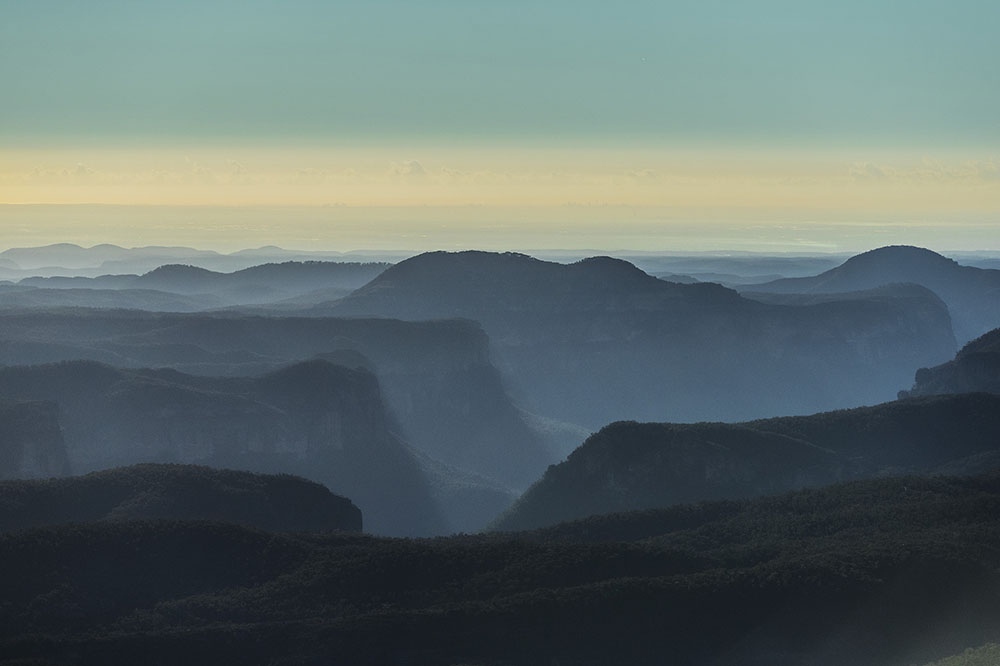
Credit: Destination NSW
Sydney is by far the most visited city in Australia, known best for its Harbour and Opera House. But just two hours outside of the city is the Greater Blue Mountains Area. This natural wonder is truly a must-visit on your next trip to Sydney. There are so many things to do in the Blue Mountains that you could easily spend an entire trip trekking through it.
The Greater Blue Mountains Area is a largely untouched, mountainous forest landscape. The huge expanse covers more than two million acres just west of the hustle and bustle of Sydney. It was named a protected UNESCO World Heritage Site because of its unique geological rock formations, forest and waterfalls. This ecological diversity provides a wide range of habitats for more than 400 different types of animals. Several species considered rare or under threat of extinction call the park home.
The name “Blue Mountains” is no misnomer. Legend has it that when the temperature rises, the essential oil from the eucalyptus forest evaporates and disperses in to the air. This causes sunlight to filter through the mist in the air and scatter blue light over the canopy and vista. This natural phenomenon casts a spectacular bath of blue-light over the region.

Credit: Masaru Kitano snaK Productions
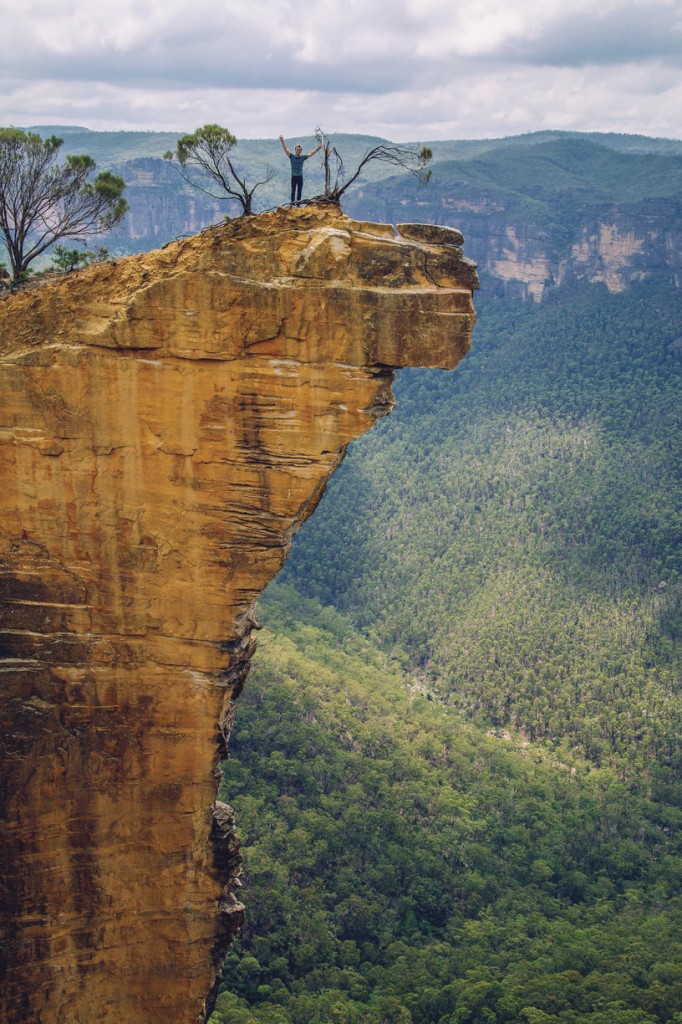
Credit: Andrew Smith / Tourism Australia
Within the Greater Blue Mountains Area are seven official National Parks of New South Wales. These include Blue Mountains, Gardens of Stone and Nattai National Parks. Blue Mountains National Park is the most popular of all parks in the Blue Mountains Area. In fact, it is one of the most visited national parks in all New South Wales.
Visitors and local Aussies alike flock to Blue Mountains National Park for strenuous hiking, easy walking, rock climbing and more. Numerous viewing areas called “lookouts” are accessible to visitors. They offer up some of the most sought after and breathtaking views of the area’s natural expanse in the entire region.
Eaglehawk Lookout
Before you even enter the park’s trailhead you will be immediately blown away by the view from this lookout. From here, you’ll be able to gaze upon The Three Sisters. This three-towered rock formation is one of the most fascinating sites in the entire Blue Mountains Area.

The Three Sisters are viewable from several vantage points in the park. Eaglehawk Lookout tends to be less populated than sites like Echo Point, so you get a solemn ambiance like no other. Eaglehawk Lookout offers up some of the best views in the park and is one of the best things to do in the blue mountains.
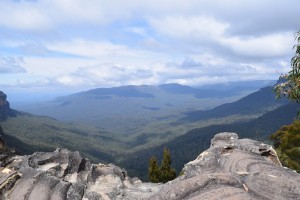
Eaglehawk Lookout, Blue Mountains
Govetts Leap
Take one look at the massive expanse over Govetts Leap and you’ll say to yourself… Well, probably nothing actually because this is a view that will truly leave you speechless. As your eyes remain transfixed on the sheer size of the valley below, you’ll begin to see the details that make up this view of the World Heritage treasure. Look one direction and see the dancing spray of water falling 180m down a sheer-face cliff to the valley below. Look another direction and spot a yellow-tailed black cockatoo swooping down to the trees. Govetts Leap is one site that must be seen to be believed.
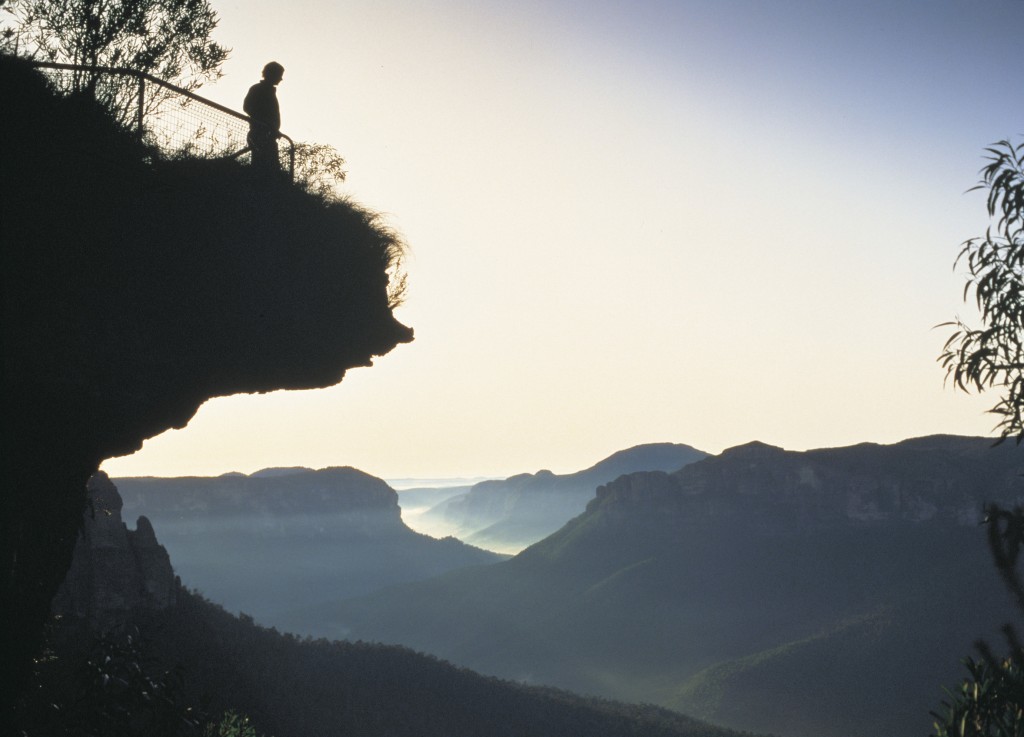
Credit: Susan Wright / Destination NSW
National Pass
Check your fear of heights at the door before beginning this 3-mile walk. The National Pass treks through sheer Blue Mountains cliff-sides at dizzying heights. As soon as you begin this walk you are rewarded with a magnificent view from Jamison Lookout. It’s an instant payoff in a walking trail that only gets better from here. As you continue on you’ll be serenaded by the sounds of Wentworth Falls, a multi-tiered waterfall cascading down from Jamison Creek above.
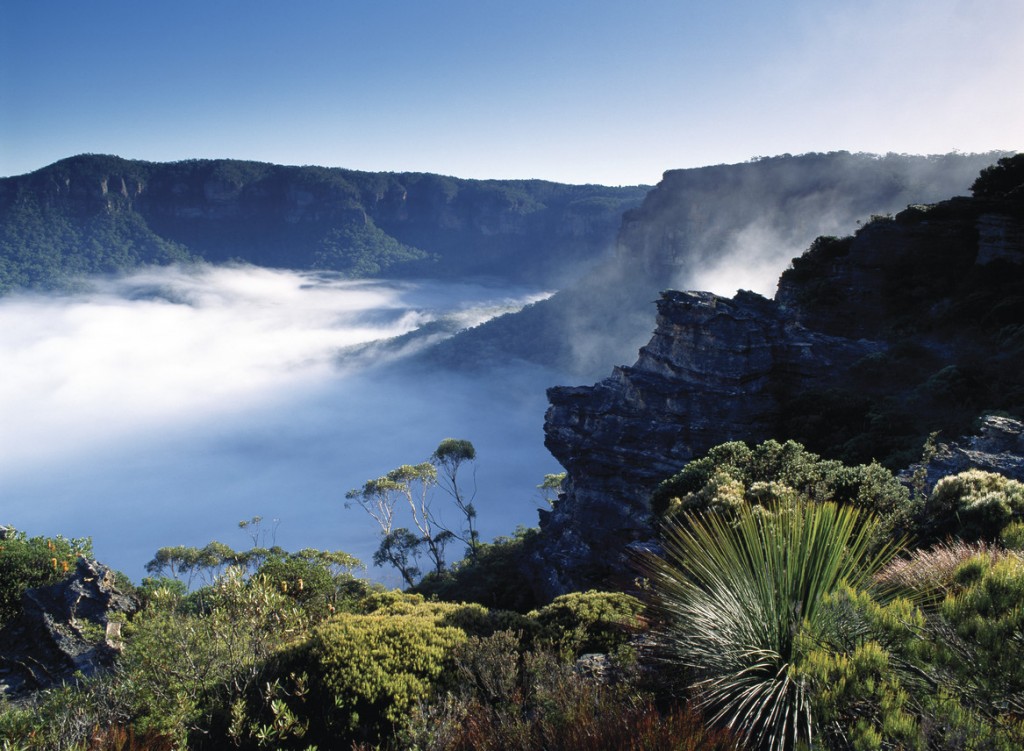
Credit: Sue Wright / Tourism Australia
From here you’ll descend the Grand Stairway. The stairway was built by hand more than a century ago. In recent years, the National Pass has been retrofitted with modern safety features like handrails along some of the more difficult paths and sheer faces. But the Grand Stairway is still a a steep climb down, so be sure to watch your step along the way!
Arrive at one of the ultimate lookouts on the National Pass and you’ll come face to face with a narrow edge over a sheer cliff face. If your knees weren’t shaking before, prepare yourself for this grand view that feels like you’re at the edge of the world overlooking the valley below.
Mount Banks
The summit of Mount Banks is the highest point in the park. You can see the peak of Mount Banks from nearly every spot in the park. Explore this peak up close for a view that truly overlooks all Blue Mountains National Park. Climbing the tallest mountain in this park luckily doesn’t involve any extra equipment or increased danger and the summit is accessible via footpath. Once you arrive at the top, fill your lungs with the clean, ozone-laden air the area provides (called a health tonic since the early 1800’s). Gaze out on a 360-degree panoramic view, unimpeded by any handrails or fencing.
This mountaintop is as natural as it gets and if you’re looking for one of the best views in the park, it doesn’t get any better.
Blue Mountains Botanic Gardens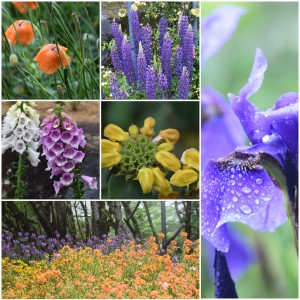
Just on the outer edge of Blue Mountains National Park, the Botanic Gardens at Mt. Tomah is a great stop on the way back from the inner Blue Mountains Area. Established in 1972, the garden contains 69 acres of public grounds. An additional 320 acres of land was also set aside, solely dedicated to the conservation of trees and other plants. Walk the grounds and marvel at more than 40,000 native, rare and exotic plants that dot the landscape.
Stunning mountain views and vistas surround the walk through the gardens. You could easily spend an entire day trying to see it all. Get lost in the garden and see the beauty of meticulously cared for, colorful flora.
Jenolan Caves
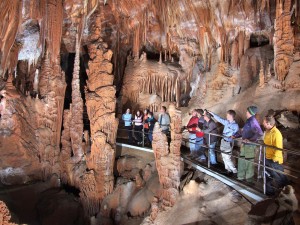
Credit: Destination NSW
While technically not inside Blue Mountains National Park, the Jenolan Caves just south-west of the Greater Blue Mountains Area is well worth the side-track to visit. Jenolan Caves is Australia’s largest underground, limestone cave network
tucked inside a valley of Kanangra-Boyd National Park. Self-guided or fully escorted tours of the cave network take you through a number of the sites caves, rock formations (including the majestic Grand Column) and subterranean rivers.
Visit the Blue Mountains
With so many things to do in the Blue Mountains, you’re never far away from having an amazing time.. As soon as you see the calming, blue-haze of the mountain range you’ll be in awe at the untouched natural world before you. Make a stop over in Blue Mountains National Park from nearby Sydney for a quick nature retreat. We have plenty of trips with stopovers in Sydney and free days to explore or let’s work together and plan the perfect trip for you.
BONUS TIP: Stop by Featherdale Wildlife Park on your way up to the Blue Mountains. There you can see some of Australia’s amazing wildlife up close. Take a photo with a koala, feed some kangaroos and see Australia’s amazing native birds!
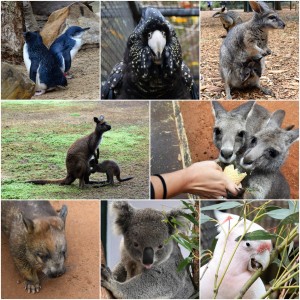
Featherdale Wildlife Park, Sydney
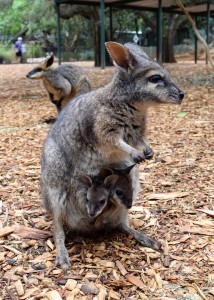
Featherdale Wildlife Park, Sydney
Add Blue Mountains National Park to My Trip
Phone us Toll Free on 1-888-359-2877 (CT USA, M-F 8.30am – 5pm).
